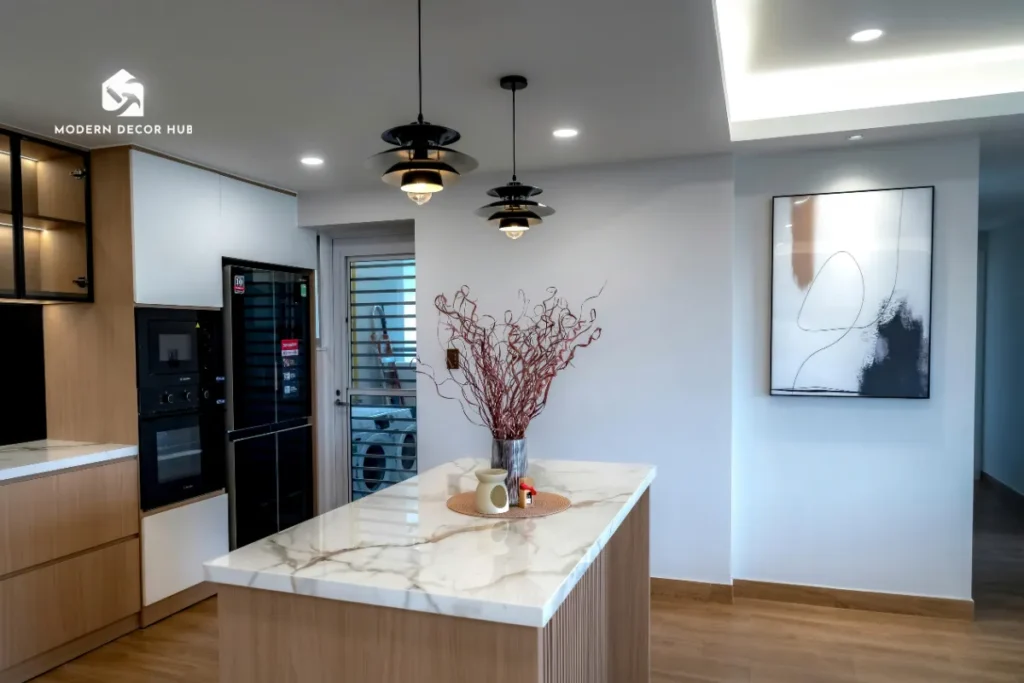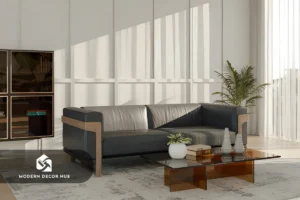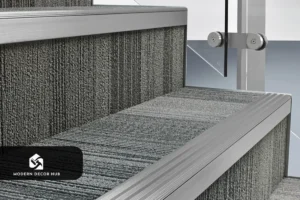Understanding Kitchen Countertop Overhang
Ever wondered why your countertop sticks out a bit past your cabinets? That little extra part isn’t just there for looks — it’s called a kitchen countertop overhang, & it plays a huge role in how your kitchen works & feels.
Think of the kitchen countertop overhang as the “comfort zone” of your counter. It’s that 1 to 1.5-inch extension that lets you rest your arms comfortably, keeps food crumbs from falling straight onto your cabinets, & gives your kitchen that neat, polished finish. It might seem like a small detail, but trust me — without it, your kitchen would look & feel unfinished.
Design & Function of a Kitchen Countertop Overhang
Now, let’s make it simple. Imagine sitting at your kitchen island with a cup of coffee. The kitchen countertop overhang gives your knees space to fit comfortably under the counter while you chat or eat. No bumping knees, no awkward angles — just smooth, cozy vibes.
Beyond comfort, this little overhang is a design & function powerhouse. It defines the countertop’s edges, shapes the overall flow of your kitchen, & even affects how much space you have for seating. Whether you’re designing a sleek modern space or a warm farmhouse kitchen, the right overhang can make everything come together beautifully.
Why a Kitchen Countertop Overhang Matters
Most people don’t realize it, but every part of your countertop — from the shape to the thickness — revolves around this one feature. The kitchen countertop overhang helps protect your cabinets from spills, offers balance to the countertop’s structure, & keeps things looking symmetrical. It’s like the quiet hero of kitchen design — not flashy, but totally essential.
In short, a kitchen countertop overhang isn’t just a random design choice; it’s a clever blend of style, function, & comfort. Once you understand its purpose, you’ll never look at your countertop the same way again.
So before you pick your countertop material or start planning your kitchen layout, take a moment to appreciate the overhang — that small detail with a big impact. Because in the world of kitchen design, it’s often the smallest things that make the biggest difference.
Standard Measurements & Recommendations for Kitchen Countertop Overhang
When it comes to designing your dream kitchen, the size of your kitchen countertop overhang matters more than you might think. Getting those few inches right can make a huge difference in comfort, appearance, & even safety.
For most countertops, the standard kitchen countertop overhang is about 1 to 1.5 inches beyond the base cabinets. This measurement offers the perfect balance — enough space to sit or lean comfortably without putting too much strain on the countertop structure.
If you’re planning a kitchen island or breakfast bar, you’ll need a deeper overhang. Typically, a 10 to 12-inch overhang works best for seating areas, giving enough legroom for people to sit comfortably. Just remember: the longer the overhang, the stronger the support needed underneath.
Granite, quartz, & marble countertops can often handle this easily, but for extended overhangs, you might want to add brackets or corbels for extra support. This ensures your countertop remains sturdy, balanced, & safe over time.
Factors That Affect Kitchen Countertop Overhang Size
The right kitchen countertop overhang isn’t a one-size-fits-all deal — it depends on several factors.
- Countertop Material: Heavy materials like granite or quartz need solid cabinet bases & sometimes metal supports for larger overhangs.
- Cabinet Design: The style of your base cabinets can limit or support how far your countertop extends.
- Seating Area Purpose: A breakfast nook, bar, or island all require different overhang depths to fit people comfortably.
- Kitchen Layout: Smaller kitchens might benefit from shorter overhangs to save space, while open-concept kitchens can handle wider ones.
Each of these factors helps decide how much of an overhang you need — both for aesthetics & functionality.
Tips for Choosing the Perfect Overhang
Here’s where design meets comfort. When choosing your kitchen countertop overhang, keep these quick tips in mind:
- Always measure your cabinet depth first before finalizing the overhang.
- Use 1 inch for standard counters, 10–12 inches for island seating.
- If the overhang goes beyond 12 inches, use supports like steel rods or decorative brackets.
- Consider the height of your stools if you’re creating a breakfast bar — it should feel natural when seated.
- Don’t forget to match your overhang style with your kitchen theme — modern kitchens love sleek straight lines, while traditional ones look stunning with rounded edges.
Different Types & Styles of Kitchen Countertop Overhang
A kitchen countertop overhang isn’t just about inches — it’s also about style & function. The way your countertop extends beyond your cabinets can completely change how your kitchen looks & feels. From sleek modern designs to cozy traditional layouts, the right overhang brings both comfort & charm.
Straight, Waterfall & Mitered Overhangs
When choosing a kitchen countertop overhang, most people encounter three main styles:
- Straight Overhang: The classic choice. It extends evenly past the cabinets, perfect for a clean, minimal look. This style works well in modern kitchens & keeps things simple while maintaining enough space for seating.
- Waterfall Overhang: The countertop material continues vertically down the sides of the cabinet, creating a seamless flow. Not only is this style visually striking, but it also protects the cabinet edges while giving your kitchen a high-end, luxurious feel.
- Mitered Overhang: The edges are cut at a 45-degree angle, which can make a thick countertop appear thinner & lighter. A mitered kitchen countertop overhang adds elegance, especially for stone or quartz surfaces.
Design & Function Considerations
Your kitchen countertop overhang needs to balance style & practicality. Here’s how:
- Seating Comfort: Make sure stools or chairs fit comfortably under the overhang. Typically, 10–12 inches is ideal for bar or island seating.
- Material Choice: Heavier materials like granite or quartz need proper support for longer overhangs. Lighter materials like butcher block allow more flexibility.
- Edge Details: Rounded edges are kid-friendly & soft on knees, while straight edges give a modern, minimalist look.
- Integration with Layout: A well-planned overhang can create extra workspace, a cozy breakfast nook, or a chic bar area without crowding your kitchen.
A well-chosen kitchen countertop overhang does more than look good — it makes your kitchen functional, inviting, & safe. By combining the right type, material, & measurements, you can transform your countertop into the heart of your home.
Support Structures & Importance for Kitchen Countertop Overhang
A kitchen countertop overhang looks sleek, but when it extends beyond your cabinets, it needs the right support. Without it, you risk sagging, cracking, or even accidents. Think of supports as the unsung heroes keeping your countertop safe, stable, & stylish.
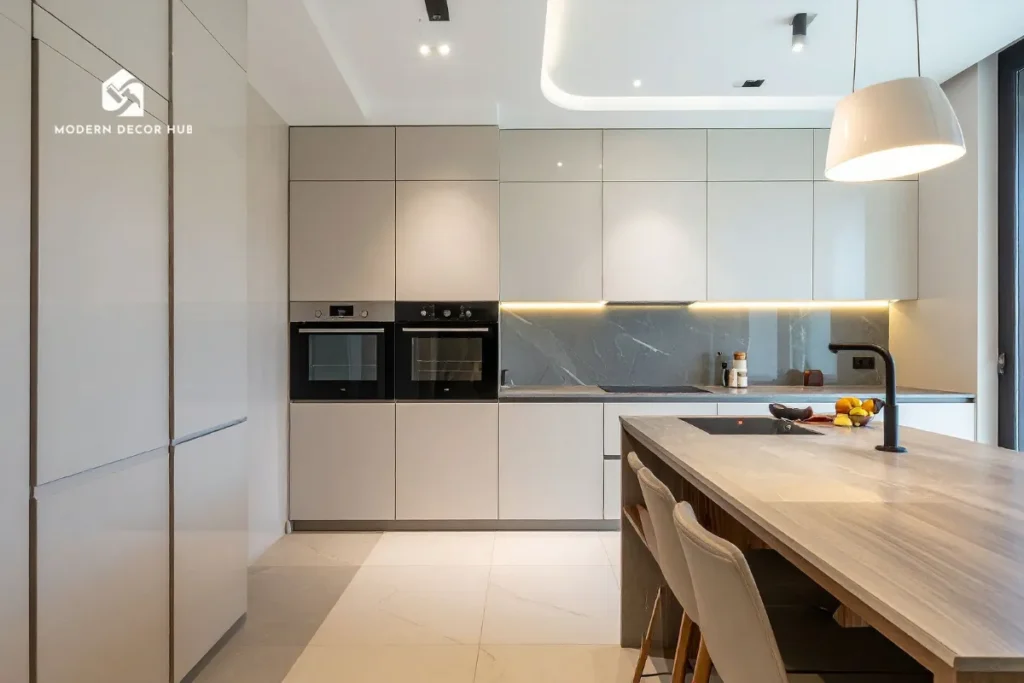
Types of Support Structures
There are several ways to support your kitchen countertop overhang, depending on the size & material:
- Brackets: Metal or wooden brackets are the most common solution for overhangs up to 12 inches. They’re sturdy, easy to install, and can even be decorative.
- Corbels: These are like small architectural pillars under the countertop. Perfect for a classic or farmhouse look, corbels support heavier surfaces while adding charm.
- Posts & Hidden Supports: For large overhangs or islands, steel posts or hidden rods provide extra strength without affecting the kitchen’s aesthetics.
Tips for Safe & Durable Overhangs
To make sure your kitchen countertop overhang lasts for years:
- Always check the material thickness — granite or quartz can handle more weight with proper support.
- Keep spacing consistent when installing brackets or corbels to distribute weight evenly.
- For overhangs beyond 12 inches, combine hidden supports with visible brackets for both safety & style.
- Regularly inspect supports for loosening, especially in high-use areas like breakfast bars or islands.
A properly supported kitchen countertop overhang doesn’t just prevent damage — it ensures comfort for seating, stability for work, & peace of mind for your entire kitchen. Remember, a small investment in supports now saves big repairs later!
Design & Aesthetic Considerations for Kitchen Countertop Overhang
A kitchen countertop overhang isn’t just about function — it’s a key design feature that can elevate your kitchen’s look. The right overhang blends style & practicality, making your kitchen feel polished, inviting, & balanced.
Edge Styles & Visual Appeal
The edges of your kitchen countertop overhang make a big difference:
- Waterfall Edges: Smoothly extend the countertop material down the sides for a luxurious, modern feel.
- Mitered Edges: Angled cuts create a sleek, elegant appearance, making thick countertops look lighter.
- Rounded or Bullnose Edges: Soft curves add safety for kids & a friendly, casual vibe.
Choosing the right edge style lets your overhang complement your cabinets, flooring, & overall kitchen design effortlessly.
Proportions & Layout Harmony
When designing a kitchen countertop overhang, balance is key:
- Make sure the overhang aligns with seating needs — enough legroom without overcrowding the space.
- Keep proportions consistent with the countertop depth & width.
- In smaller kitchens, avoid overly large overhangs that can overwhelm the layout.
A well-proportioned overhang ensures your kitchen feels spacious & organized, even with multiple seating areas.
Material & Color Coordination
The kitchen countertop overhang should match your kitchen’s materials & color palette:
- Stone countertops like granite or quartz pair well with neutral cabinets.
- Wooden overhangs & butcher blocks add warmth & a natural touch.
- Contrasting overhangs can highlight islands or breakfast bars as design focal points.
When materials, colors, & edges are thoughtfully combined, your overhang becomes both a functional & eye-catching feature that ties the entire kitchen together.
Material-Specific Recommendations for Kitchen Countertop Overhang
Not all countertops are created equal. Your kitchen countertop overhang will behave differently depending on the material, so knowing the limits & benefits of each is key. Let’s explore what works best for your kitchen.
Stone Countertops: Granite, Quartz & Marble
Stone is popular for a reason — it’s durable, stylish, & long-lasting.
- Granite & Quartz: Can handle standard overhangs of 10–12 inches with proper support. Ideal for islands & breakfast bars.
- Marble: Beautiful but softer; limit the overhang to 1–1.5 inches without extra support to avoid cracks.
Stone materials bring elegance & strength to your kitchen countertop overhang, but always pair them with sturdy cabinets or brackets for safety.
Wood & Butcher Block Countertops
Wood countertops are warm, natural, & forgiving.
- Butcher Block: Perfect for moderate overhangs up to 12 inches. Slight flex is normal, but proper support prevents sagging.
- Edge Finishing: Rounded edges add safety & enhance the cozy feel.
Wood makes your kitchen countertop overhang feel inviting while offering functional workspace for cooking & seating.
Modern & Engineered Materials: Solid Surface, Dekton & Porcelain
These materials give you style, flexibility & modern durability:
- Solid Surface (e.g., Corian): Lightweight, supports overhangs up to 12 inches easily; perfect for islands.
- Dekton & Porcelain: Extremely strong; can handle longer overhangs with minimal support, ideal for large kitchens.
Choosing the right material ensures your kitchen countertop overhang is both beautiful & practical, letting you enjoy your kitchen for years without worry.
Common Mistakes to Avoid With Kitchen Countertop Overhang
Even small mistakes with your kitchen countertop overhang can lead to frustration, discomfort, or even damage. Knowing what to avoid helps keep your kitchen functional, safe, & stylish.
Overextending Without Proper Support
One of the biggest mistakes is making your kitchen countertop overhang too long without the right supports.
- Overhangs beyond 12 inches need brackets, corbels, or hidden steel supports.
- Skipping support can cause sagging or cracking over time.
- Always check the material strength — heavier stones like granite need extra care.
A little planning here goes a long way in keeping your countertop sturdy & safe.
Ignoring Seating & Ergonomics
Another common issue is not thinking about comfort & seating.
- If your overhang is too shallow, people’s knees will bump the cabinets — awkward & uncomfortable.
- Too deep, & chairs may not fit, wasting space & creating clutter.
- Stick to 10–12 inches for island seating & 1–1.5 inches for standard counters.
Balancing overhang depth ensures your kitchen is inviting & functional for everyone.
Choosing the Wrong Material or Edge
Material choice matters as much as size:
- Soft stones or thin slabs without support can crack under stress.
- Sharp edges may be dangerous, especially for families with kids.
- Round edges or mitered finishes improve safety & aesthetics.
By pairing the right material with proper support & design, your kitchen countertop overhang will look amazing & last for years.
Installation & Maintenance Tips for Kitchen Countertop Overhang
A well-installed kitchen countertop overhang isn’t just beautiful — it’s safe, sturdy, & functional. Following the right steps during installation and keeping up with maintenance will make your countertop last for years.
DIY vs Professional Installation
Installing a kitchen countertop overhang can be tricky depending on the material:
- DIY Installation: Works for small overhangs (1–2 inches) on lightweight materials. Perfect if you enjoy hands-on projects & have basic tools.
- Professional Installation: Recommended for large overhangs or heavy stones like granite, quartz, or marble. Pros ensure precise measurement, proper support, & safe handling.
- Remember, cutting corners here can lead to sagging or cracks — investing in proper installation pays off.
Maintenance & Cleaning Tips
Keeping your kitchen countertop overhang clean & cared for ensures longevity:
- Wipe spills immediately to avoid staining, especially on stone or wood surfaces.
- Use gentle cleaners for quartz, marble, & granite; harsh chemicals can damage the surface.
- Check supports regularly — brackets, corbels, or hidden rods can loosen over time. Tighten as needed.
- Avoid standing on overhangs or placing extremely heavy objects without proper support.
Preventing Damage & Ensuring Longevity
A few extra precautions make a big difference:
- Avoid cutting directly on the countertop to prevent scratches.
- Use cutting boards, trivets, & coasters to protect edges & surfaces.
- Monitor for signs of wear or sagging and address problems early.
- For wooden countertops, occasional oiling helps maintain color & prevent cracks.
By combining careful installation with regular maintenance, your kitchen countertop overhang will remain both functional & beautiful, enhancing your kitchen for years to come.
Bonus Insights & Tips for Kitchen Countertop Overhang
Your kitchen countertop overhang does more than just extend your counter — it’s a small detail with a big impact. Here are some bonus insights to help you make the most of it.
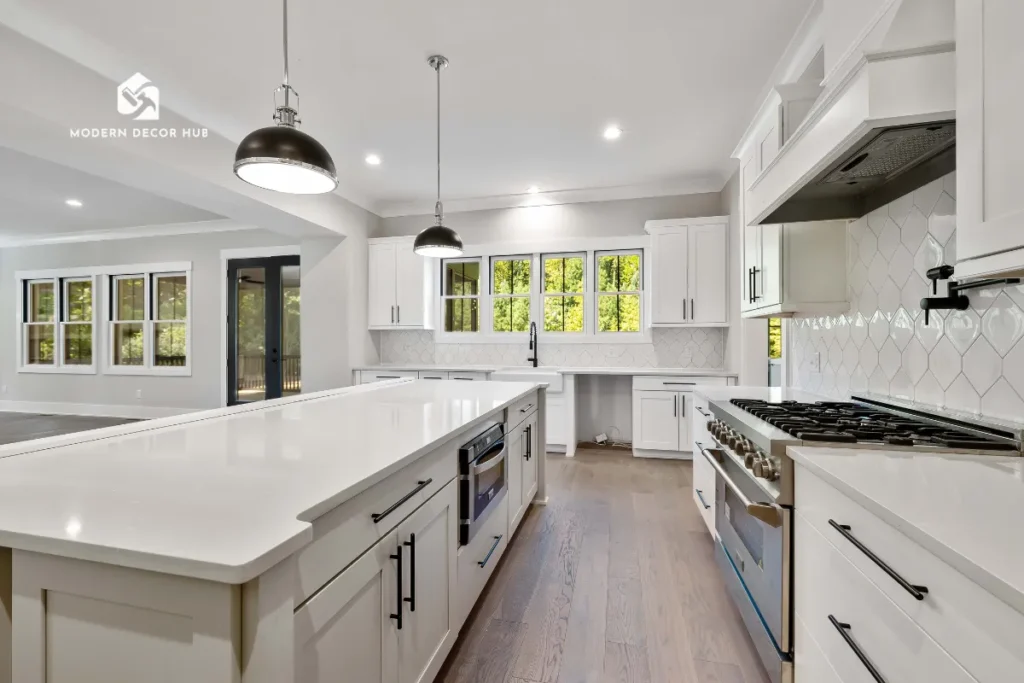
Impact on Kitchen Resale Value & Appeal
A well-planned kitchen countertop overhang can actually boost your home’s appeal:
- Islands with seating are highly desirable for buyers — a 10–12 inch overhang for bar stools makes your kitchen feel social & functional.
- High-quality materials and stylish edges give a premium look without a huge cost.
- Even small design details, like a waterfall or mitered edge, can make your kitchen stand out in listings.
Investing in your overhang can pay off if you ever decide to sell your home.
Trends in Modern Countertop Overhang Design
The world of kitchen countertop overhang is evolving. Here’s what’s trending:
- Sleek, minimal overhangs that match flush cabinets for a modern look.
- Waterfall edges on islands to create a seamless, luxurious vibe.
- Contrasting overhangs as visual focal points — for example, dark countertops over light cabinets.
- Sustainable materials like recycled stone or bamboo butcher block for eco-friendly kitchens.
Keeping up with trends ensures your kitchen feels current & stylish without sacrificing practicality.
Maximizing Functionality & Comfort
Your kitchen countertop overhang is more than decoration — it’s functional, too:
- Use overhang space for breakfast bars, homework stations, or casual dining.
- Ensure enough legroom — typically 10–12 inches for comfortable seating.
- Add subtle under-counter lighting to highlight the overhang & improve ambiance.
- Integrate smart storage below extended overhangs for extra efficiency.
With these insights, your kitchen countertop overhang becomes a true multitasker — stylish, functional, & a real conversation starter.
Final Thought
A kitchen countertop overhang may seem small, but it’s key for style, comfort, & function. The right measurements, material, & support make your kitchen safer, more practical, & visually appealing.
In short, a well-planned overhang turns your countertop into a space that’s functional, stylish, & inviting — the heart of your kitchen.
FAQs
What is a standard kitchen countertop overhang?
A standard overhang is usually 1–1.5 inches for cabinets & 10–12 inches for seating areas.
How much overhang is safe without support?
Most materials are safe up to 12 inches with proper support; anything longer needs brackets or corbels.
Which materials work best for countertop overhangs?
Granite, quartz, marble, butcher block, & solid surface materials are ideal, depending on overhang length.
What are popular edge styles for overhangs?
Straight, mitered, waterfall, & rounded edges are popular and blend style with function.
How do I support a long countertop overhang?
Use brackets, corbels, posts, or hidden rods to prevent sagging and ensure durability.
Can a countertop overhang affect seating comfort?
Yes! Proper overhang ensures enough legroom for stools & chairs, making your kitchen more comfortable & functional.

